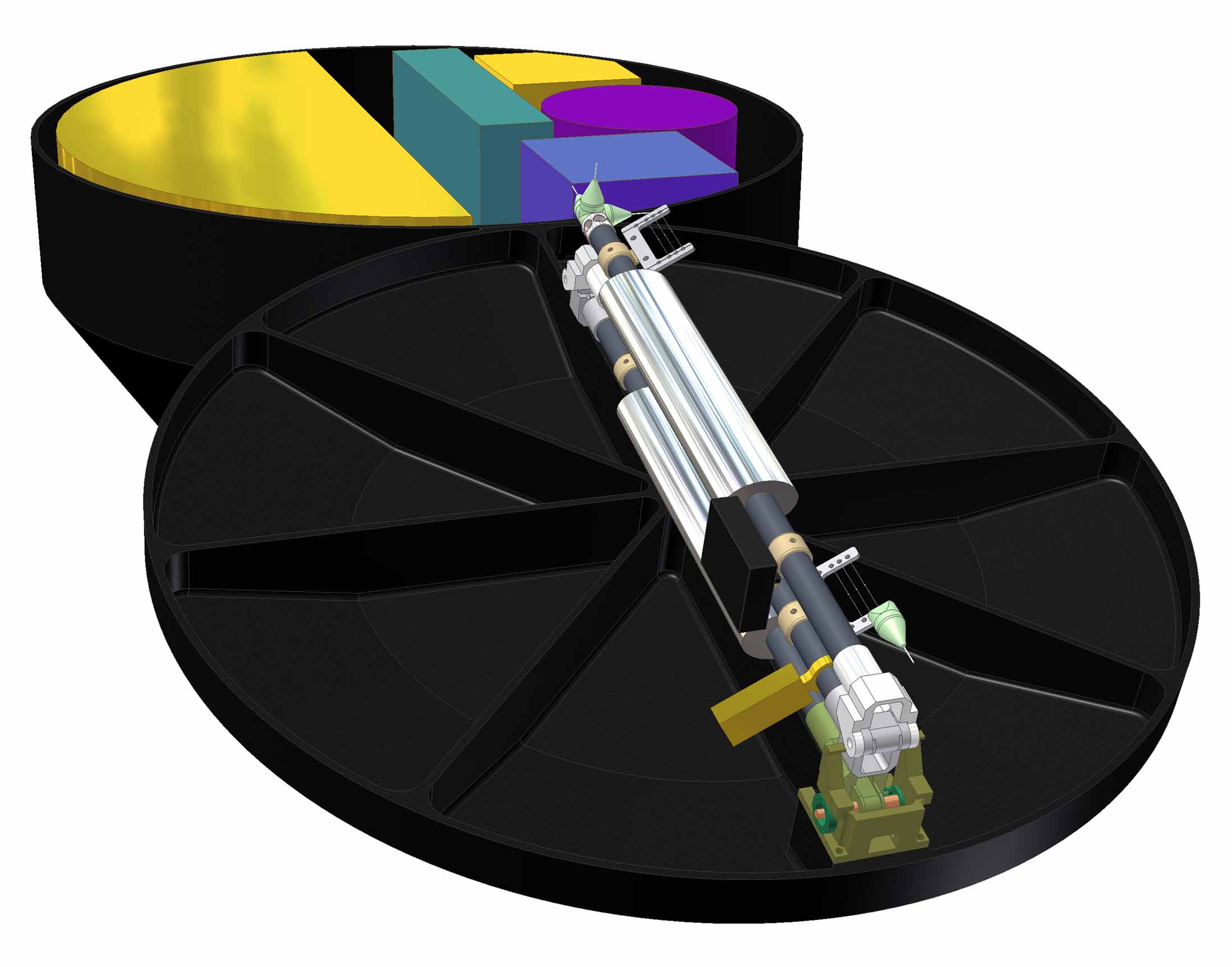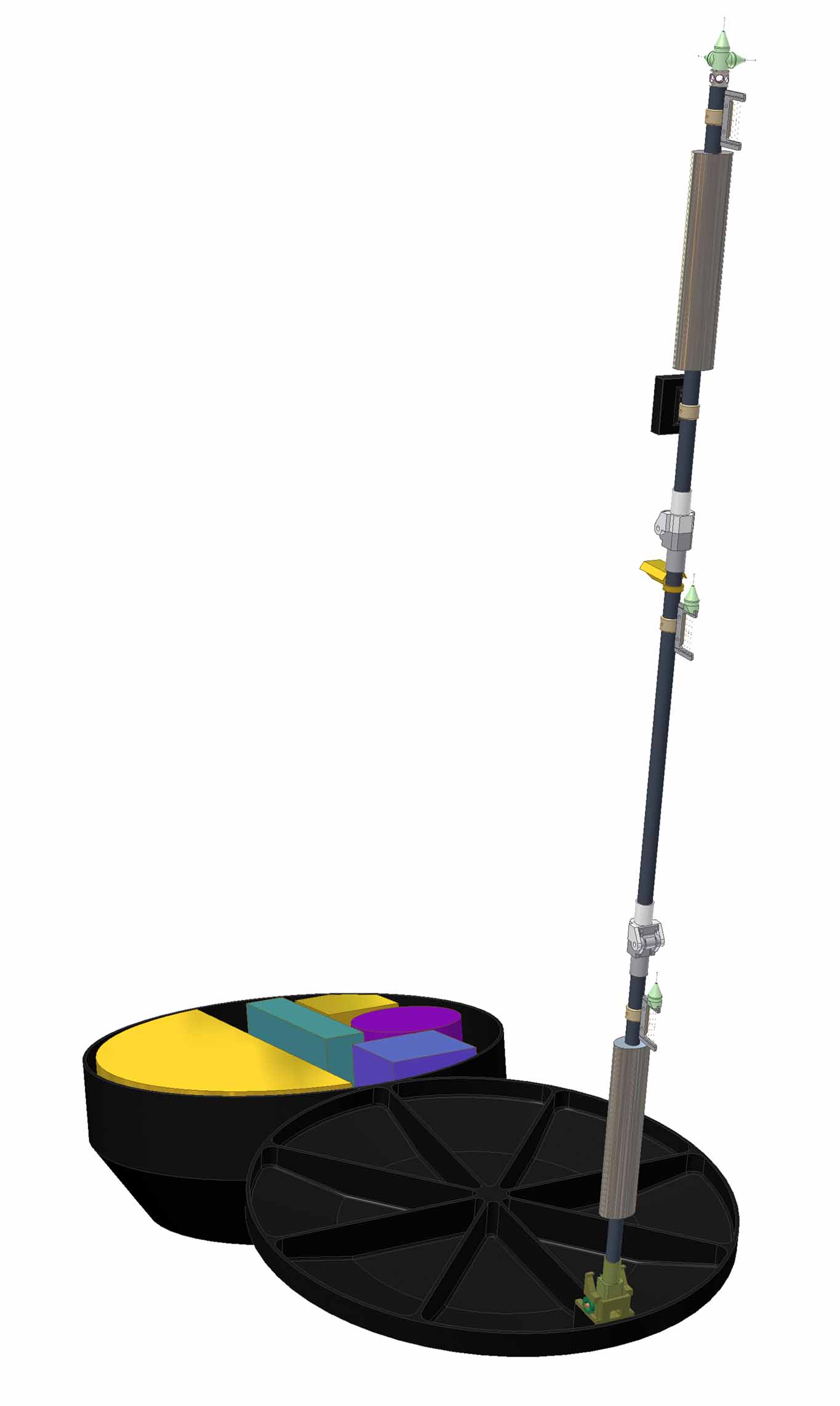| ROBOTIC SPACE MISSIONS |
| EDUCATIONAL PROGRAMS |
| RESOURCES |
| FORTHCOMING EVENTS |
| ORGANISING EVENTS |
| FUNDING BODIES |
| USEFUL CONTACTS |
| PAST MISSIONS |
| CURRENT MISSIONS |
| FUTURE MISSIONS |
| ESA EXOMARS MISSION |
| UK VANGUARD MISSION |
| AEP |
| PANCAM |
| RAMAN/LIBS |
| UVIS |
| LMC |
ROBOT SPACE EXPLORERS
ADVANCED ENVIRONMENTAL PACKAGE (AEP)
 Many
of ExoMars's physics instruments will be in the Geophysics/Environment
Package (GEP), accommodated on the Descent Module and powered by a small
radioisotope thermoelectric generator (RTG). The GEP will include
the Advanced Environmental Package (AEP) - a suite of meteorological
instruments being designed by scientists at the University of Oxford and
The Open University to monitor atmospheric conditions at the landing site
for at least six years.
Many
of ExoMars's physics instruments will be in the Geophysics/Environment
Package (GEP), accommodated on the Descent Module and powered by a small
radioisotope thermoelectric generator (RTG). The GEP will include
the Advanced Environmental Package (AEP) - a suite of meteorological
instruments being designed by scientists at the University of Oxford and
The Open University to monitor atmospheric conditions at the landing site
for at least six years.
The Advanced Environmental Package will probably comprise wind,
temperature and humidity sensors located on a deployable boom, and a dust
impact sensor, pressure sensor and optical depth sensor located in the GEP
housing. The 1-metre boom will comprise three hinged segments to
enable it to be folded inside the housing.
 Wind and
temperature sensors will be located at the top and at two lower heights on
the boom, enabling 3D wind measurements and profiling of the atmospheric
boundary layer near the surface. The wind sensors will use hot-film
anemometry. The temperature sensors will use thin-wire
thermocouples.
Wind and
temperature sensors will be located at the top and at two lower heights on
the boom, enabling 3D wind measurements and profiling of the atmospheric
boundary layer near the surface. The wind sensors will use hot-film
anemometry. The temperature sensors will use thin-wire
thermocouples.
The humidity sensor will be located on the middle section of the boom. It will use a Vaisala capacitive relative humidity sensor containing a thin-film polymer whose dielectric properties depend on its water content.
The dust impact sensor will use a
polyvinylidene fluoride (PVDF) film that detects impacts from wind-blown
dust.
The pressure sensor will use a Vaisala miniature capacitive pressure
sensor whose silicon diaphragm bends as the pressure varies, changing the
height of the gap (and thereby the capacitance) in the sensor.
The optical depth sensor will measure dust opacity and detect clouds using two diodes that measure sunlight at wavelengths of 400nm and 800nm.

Dust devils in Gusev Crater, Mars
